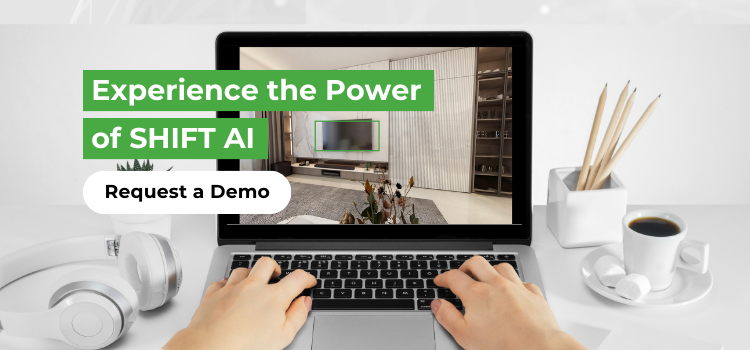In today's landscape, training and development departments are tackling a range of challenges from technological upgrades to creating content that's accessible and engaging for a diverse workforce.
This complex landscape is reflective of broader industry trends where the pace of change is not just fast, but accelerating.
The Industry at a Glance:
-
According to LinkedIn's 2022 Workplace Learning Report, 64% of learning and development professionals agree that their role has become more challenging compared to just two years ago. This is largely due to the rapid technological shifts and the increasing demand for digital upskilling.
-
A recent Gartner survey highlights that 58% of the workforce needs new skill sets just to keep up with their current job demands, let alone future innovations.
-
The same Gartner study points out that the shift to more remote and hybrid work models has necessitated a complete rethink of traditional training methods. This includes not only the mediums of delivery but also the content itself to ensure inclusivity and engagement across geographies and cultures.
Diving Deeper into Key Challenges:
1) Continuous Tech Upgrades: A Relentless Cycle
Adapting to new technologies is no longer a periodic activity but a continuous one. The emergence of cutting-edge tools and platforms means training programs must not only incorporate the latest tech but also anticipate future trends. This requires an agile approach to learning program development and a keen insight into technological trajectories.
2) The Complexity of Custom Course Creation
Developing training materials that cater to varied learning preferences and professional backgrounds is increasingly complex. It demands a profound understanding of demographic shifts and learning science, ensuring that content is not only informative but also engaging and tailored to diverse cognitive and cultural backgrounds.
3) The Hurdles of Translation and Localization
As businesses expand globally, the need for localizing training content becomes critical. This goes beyond mere translation to include contextual adaptation, making it relevant and relatable to different cultural nuances. Effective localization must account for regional differences in dialect, societal norms, and professional practices.
4) The Struggle for Content Accessibility
Ensuring universal accessibility is a significant challenge, especially in an age where digital divides are more apparent. Training materials must be designed to be accessible to people with disabilities, which encompasses auditory, visual, cognitive, and motor impairments. This includes the use of assistive technologies and universally designed learning paths that accommodate all learners.
5) The Pressure of Rapid Implementation
The rapidity with which training programs need to be rolled out is unprecedented. Organizations must swiftly respond to changes in market conditions, regulatory updates, and technological advancements, requiring a rapid design and deployment of relevant training modules.
6) The Demands of Multimedia Resource Development
Engaging today’s learner requires a blend of multimedia tools—from interactive simulations to augmented reality experiences. These resources must not only capture attention but also significantly enhance retention and application of knowledge, demanding high levels of expertise in media production and instructional design.
The challenges that training and development departments face reflect bigger changes happening across the corporate world. These departments are doing more than just meeting immediate needs; they're also shaping the future of work by promoting a culture of ongoing learning and flexibility.
Using advanced technologies, especially AI, is key in turning these challenges into opportunities. This approach leads to more dynamic, inclusive, and effective training solutions. Looking ahead, it's clear that the role of training and development is becoming increasingly important. It's not just about upskilling employees anymore—it's also crucial for maintaining an organization's resilience and staying competitive in a world that's constantly evolving.
Also read: Golden Rules for Using AI to Supercharge E-Learning Content Development
The Future of Training Departments with Artificial Intelligence
Looking ahead, the landscape of training departments is set to undergo a radical transformation thanks to the power of artificial intelligence (AI).
As this technology becomes more deeply integrated, training and development professionals are expected to shift their focus significantly towards the human and strategic aspects of their roles.
This means less time spent on repetitive tasks and more time to design learning experiences that truly inspire and motivate employees.
According to an IBM report, an estimated 40% of knowledge management tasks will be automated in the coming years through AI. This will free up a significant amount of time for training specialists to engage in higher-value activities, such as personalized interactions with employees and the development of long-term strategies that align with the global goals of the company.
Additionally, a McKinsey study revealed that 87% of companies are experiencing skill shortages within their industries and see AI as an effective and timely way to bridge this gap.
Also read:
- 3 Ways to Leverage Artificial Intelligence for Rapid eLearning Course Creation
- AI Tips to Transform Your eLearning Content Creation Process
Daily Uses of AI in Training Departments
Integrating artificial intelligence (AI) into training departments is opening up a world of possibilities.
Let's explore how it's used day-to-day to enhance various aspects of corporate learning:
1-Enhancing Accessibility in Learning
AI's ability to automatically transcribe video audio to text is a significant advancement that's revolutionizing training material accessibility. This process, known as automatic transcription, is crucial for making content accessible to people with hearing impairments, ensuring no one is left out due to communication barriers.
How does it work? It's pretty straightforward: each time a video plays on the learning platform, AI analyzes the audio in real-time and generates subtitles that appear on screen. These subtitles not only accurately reflect the spoken content but also include timestamps and, in more advanced systems, can identify different speakers. This is especially useful in videos with multiple participants, like debates or panel discussions.
Tip: To maximize the effectiveness of automatic subtitles, it's a good idea to review and edit them after they're generated. While AI has come a long way, there can still be errors, especially with industry-specific jargon or proper names. A quick review can ensure that the subtitles are completely accurate and clear.
Imagine you have a safety training course that includes several demonstration videos. By using AI to automatically transcribe these videos, you ensure that all employees can follow the detailed instructions and fully understand the safety precautions and procedures being explained. Plus, these subtitles can serve as a visual reinforcement of the auditory material for all users, facilitating better information retention.
2- Streamlining Course Creation
Efficiency in course creation is a critical issue for training departments that want to maximize their impact effectively.
Here, AI stands out as an invaluable resource, helping to quickly structure and develop courses. With AI, there's no need to start each course from scratch or rely excessively on subject matter experts for every content detail.
How does it work? AI can analyze and organize large amounts of information to create course outlines based on the learning objectives specified by trainers. Using advanced algorithms, it can also suggest modules, identify key topics, and recommend resources and learning activities that align with the course goals. This not only saves time but also ensures that the course content is relevant and logically structured.
Practical example: Suppose you need to develop a course on project management. Instead of manually compiling every component of the course, you input the learning objectives, like "understanding Scrum" and "applying agile methodologies in real projects," into your AI-powered eLearning platform. The AI then suggests a course structure that includes an introduction to Scrum, roles and responsibilities in an agile team, and case studies of projects that used agile methodologies. It also proposes interactive assessments and simulates practical situations that collaborators might face, organizing everything in a coherent and educationally sound format.
Tip: Although AI can handle up to 90% of the content structuring and suggestion work, it's crucial that you perform a final review and customization of the course. This step ensures that the material is not only technically correct but also resonates with the culture and specific needs of your organization.
3- Providing Continuous and On-Demand Support with AI
Continuous and on-demand support is essential in a world where speed and efficiency are keys to business success.
The integration of AI-powered virtual assistants, like chatbots, in training systems is revolutionizing how support is provided to employees. These assistants are available 24/7, allowing employees to get instant answers to their questions, no matter the time or time zone.
How does it work? An AI chatbot can be programmed with a vast amount of information related to the courses and practices of the company. It uses natural language processing to understand employee questions and provide clear, precise answers. Additionally, these assistants can learn over time, adapting to offer more personalized and effective responses as they interact with more users.
Practical tip: To ensure that the chatbot is truly helpful, it's crucial to keep its database updated with the latest and most relevant information. This includes details about internal procedures and company policies to solutions for common technical issues. It's also important to periodically test the chatbot to ensure it understands questions correctly and provides appropriate responses. Consider integrating a feedback option within the chat to allow users to rate the help received, providing a direct way to continually improve the tool.
4) Creation of Videos, Audios, and Multimedia Resources
Creating multimedia resources for training used to be a fairly tedious and complicated process. Before, you needed a team of designers, video editors, and sound experts to produce something that truly captured the attention of your employees. Additionally, adjusting every detail, from selecting the right images to syncing the audio, could take days, or even weeks!
How has this changed? Thanks to artificial intelligence, this process has been greatly simplified. eLearning platforms like SHIFT, powered by AI, are revolutionizing the way training departments create content. These tools automate much of the heavy lifting, allowing even someone without technical expertise to generate high-quality videos, audios, and animations in much less time.
Practical tip: Although AI does much of the hard work, it's essential that you review and personalize the materials to ensure they fit the specific needs of your organization. Take a moment to review and modify what the AI has created, ensuring that the examples used are relevant and that the tone of the content is appropriate for your audience.
Observing how artificial intelligence is transforming training departments is exciting, recognizing that we are only at the beginning of this technological revolution. What we see today is just the tip of the iceberg; AI's ability to adapt, personalize, and streamline training is a field that will continue to expand and evolve at an impressive pace.
The future of AI in training departments is now, and it's a future that's being written in real-time. Every technological advance opens new possibilities for more efficient and engaging teaching methods, which means that the strategies we implement today could be completely transformed in the coming years.
With the speed at which technology evolves, it's vital to stay up-to-date with the latest innovations and think critically about how we can effectively integrate them.
Adaptability will be key, and those who can navigate this wave of continual change will not only improve the learning experience in their organizations but will also be at the forefront of training and talent development.
Now, as you consider integrating AI into your training department, reflect on the following questions:
-
What are the main challenges your training department faces that AI could help to solve?
-
What steps can you take to begin integrating AI effectively into your current training processes?








